|
ARCTIC
OCEAN
ABOUT -
CONTACTS - FOUNDATION -
HOME - A-Z INDEX
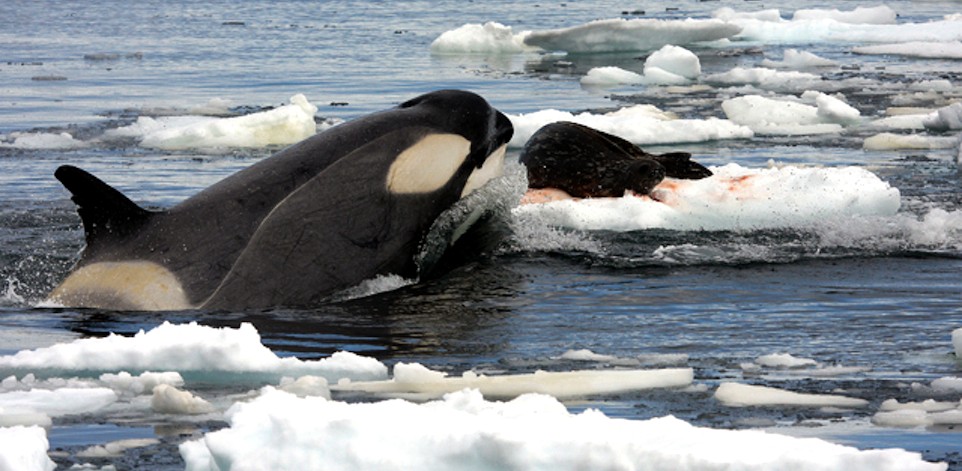
THE
INDEPENDENT FEB 2015 - Scientists estimate that about 8 million tons of plastic debris such as food packaging and
plastic bottles
are being washed into the oceans each year – and the cumulative quantity of waste will result in a tenfold increase in the total amount of plastic in the sea by 2020.Orca
(Orcinus orca) hunting a Weddell seal in the Southern Ocean.
WASHINGTON POST APRIL 2017
Drifts of floating plastic that humans have dumped into the world's oceans are flowing into the pristine waters of the Arctic as a result of a powerful system of currents that deposits waste in the icy seas east of Greenland and north of Scandinavia.
In 2013, as part of a seven-month circumnavigation of the Arctic Ocean, scientists aboard the research vessel Tara documented a profusion of tiny pieces of plastic in the Greenland and Barents seas, where the final limb of the Gulf Stream system delivers Atlantic waters northward. The researchers dub this region the "dead end for floating plastics" after their long surf of the world's oceans.
The researchers say this is just the beginning of the plastic migration to Arctic waters.
"It's only been about 60 years since we started using plastic industrially, and the usage and the production has been increasing ever since," said Carlos Duarte, one of the study's co-authors and director of the Red Sea Research Center at the King Abdullah University of Science and Technology in Saudi Arabia. "So, most of the plastic that we have disposed in the ocean is still now in transit to the Arctic."
The results were published Wednesday in the journal Science Advances. The study was led by Andres Cozar of the University of Cadiz in Spain along with 11 other researchers from universities in eight nations: Denmark, France, Japan, the Netherlands, Saudi Arabia, Spain, the United Kingdom and the United States.
The researchers estimated that about 300 billion pieces of tiny
plastic are suspended in these Arctic waters right now, although they said the amount could be higher. And they think there is even more plastic on the seafloor.
Several factors support the idea that the plastic entered these waters via ocean currents rather than local pollution. First, the Arctic has a very small population that is unlikely to directly contribute so much waste. Also, the aged and weathered state of the plastic, and the tiny size of the pieces found, suggested that it had traveled the seas for decades, breaking down along the way.
"The plastic pieces that may have been initially inches or feet in size, they have been brittled by exposure to the sun and then fragmented into increasingly smaller particles, and eventually led to this millimeter-size plastic that we call microplastic," Duarte said. "That process takes years to decades. So the type of material that we're seeing there has indications that it has entered the ocean decades ago."
Finally, the study didn't find much plastic in the rest of the Arctic ocean beyond the Greenland and Barents seas, also suggesting that currents were to blame. Instead the plastic had accumulated where the northward-flowing Atlantic waters plunge into the Arctic depths. Presumably, the plastic then lingers at the surface.
The Greenland and Barents seas contained 95 percent of the Arctic's plastic, the research found (the ship sampled 42 sites across the Arctic Ocean). The Barents Sea happens to be a major fishery for cod, haddock, herring and other species. A key question will be how the plastic is affecting these animals.
The study's results sent a troubling message to one researcher who has also focused on the consequences of plastic debris in the oceans and other waterways.
"Isn't it kind of ironic that days before Earth Day there is more demonstrated proof of widespread contamination of our plastic waste in places that are so far from the human footprint and thus locations we consider to be pristine," said Chelsea Rochman, a marine ecologist at the University of Toronto who was not involved in the study but praised it as "a great contribution to the field."
The ocean circulation system in the Atlantic responsible for this plastic transport is part of a far larger "thermohaline" ocean system driven by the temperature and salt content of oceans. It is also often called an "overturning" circulation because cold, salty waters sink in the North Atlantic and travel back southward at deep ocean depths.
As humans now put 8 million tons of plastic in the ocean annually, learning how such currents affect the plastic's global distribution is a key scientific focus. Researchers, including Duarte, previously found that plastic slowly travels the world's oceans but tends to linger in five "gyres," or circular ocean currents in the subtropical oceans in both the northern and southern hemispheres. One of those gyres is located in the Atlantic, which then feeds the Arctic.
Scientists noted that the vast majority of ocean plastic becomes lost before it reaches the Arctic. They aren't sure where most of the plastic falls out and are researching to determine those locations. "The plastic that escapes those traps is the one that actually makes it into the Arctic," Duarte said. "But when it enters the Arctic, there is no way out, it just stays there and is stuck there."
Because it takes such a long time for plastic to travel across the world in ocean currents, the study concludes that the current waste is largely the work of North Americans and Europeans, who dumped it in the Atlantic. Waste from other parts of the world that dump huge volumes of plastic into the oceans is still in transit.
Rochman said she feared that as the Arctic becomes more accessible because of ice melt linked to climate change, more plastic could wash in. "As the
ice melts, we may see increasing concentrations of plastic in the
Arctic due to the opening of passageways for vessels and plastics in surface currents," she said, "as well as plastics in the ice becoming free to float and interact with marine animals upon melting."
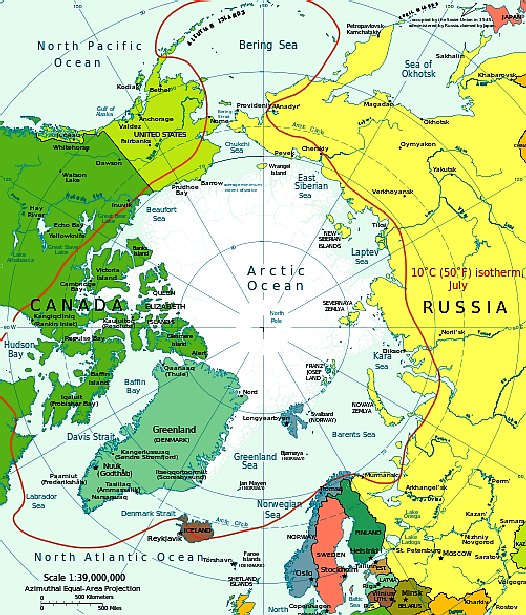
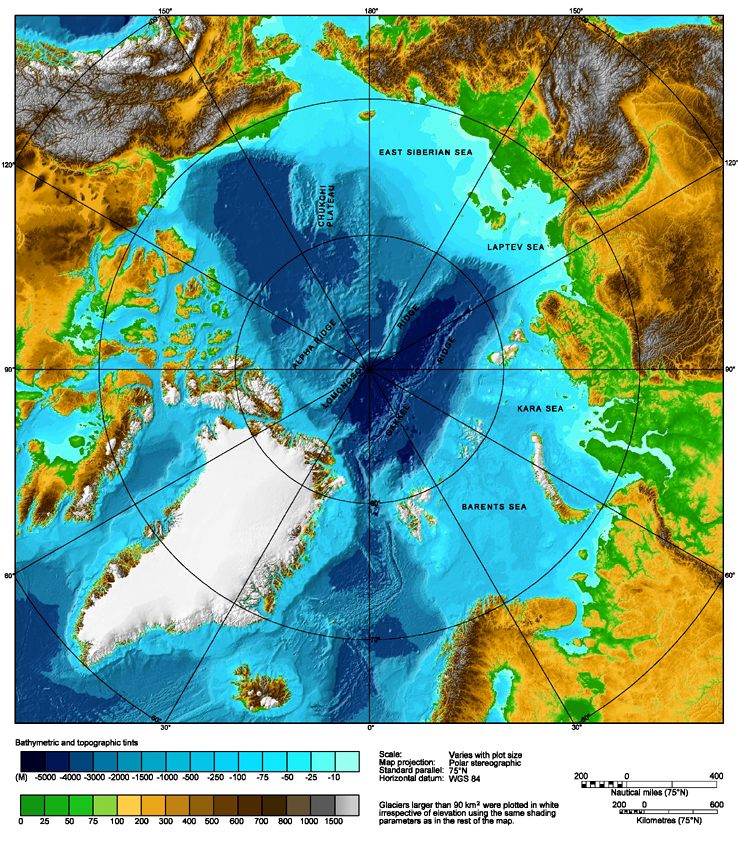
TOPOGRAPHY - The Arctic Ocean is the smallest and shallowest of the world's five major oceans. The International Hydrographic Organization
(IHO) recognizes it as an ocean, although some oceanographers call it the Arctic Mediterranean Sea or simply the Arctic Sea, classifying it a mediterranean sea or an estuary of the Atlantic Ocean. Alternatively, the Arctic Ocean can be seen as the northernmost part of the all-encompassing World Ocean.
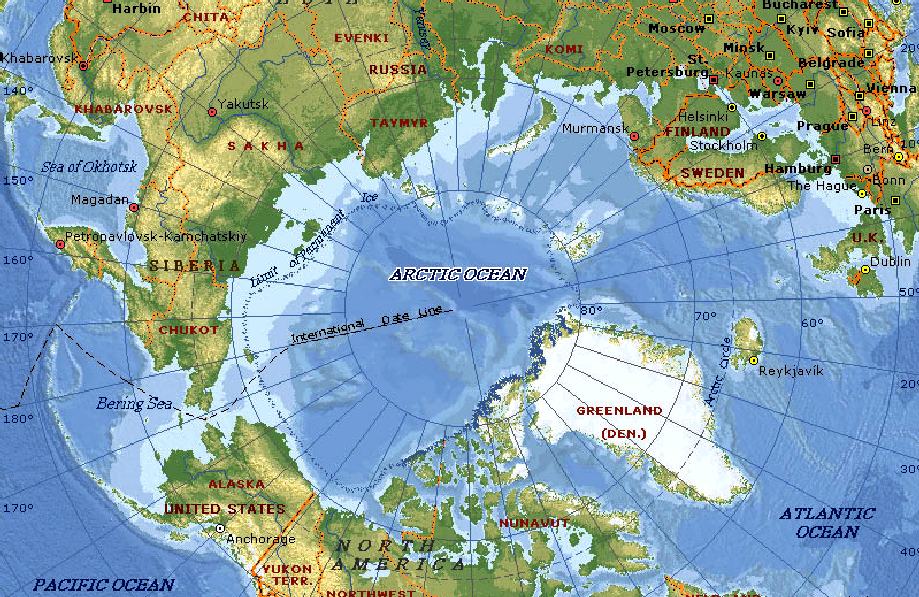
AREA - The Arctic Ocean occupies a roughly circular basin and covers an area of about 14,056,000 km2 (5,427,000 sq mi), almost the size of Antarctica. The coastline is 45,390 km (28,200 mi) long. It is surrounded by the land masses of Eurasia, North America, Greenland, and by several islands.
Located mostly in the Arctic north polar region in the middle of the Northern Hemisphere, the Arctic Ocean is almost completely surrounded by Eurasia and North America. It is partly covered by sea ice throughout the year and almost completely in winter. The Arctic Ocean's surface temperature and salinity vary seasonally as the ice cover melts and freezes; its salinity is the lowest on average of the five major oceans, due to low evaporation, heavy fresh water inflow from rivers and streams, and limited connection and outflow to surrounding oceanic waters with higher salinities. The summer shrinking of the ice has been quoted at 50%. The US National Snow and Ice Data Center
(NSIDC) uses satellite data to provide a daily record of Arctic sea ice cover and the rate of melting compared to an average period and specific past years.
OCTOBER 2017 ARCTIC ICE MAY BE MELTING FASTER THAN EXPECTED
Calgary, Alberta: Arctic sea ice may be thinning faster than predicted because salty snow on the surface of the ice skews the accuracy of satellite measurements, a new study from the University of Calgary said on Tuesday.
The report from the Canadian university's Cryosphere Climate Research Group published in the academic journal Geophysical Research Letters found satellite estimates for the thickness of seasonal sea ice have been overestimated by up to 25 percent.
That means the Arctic Ocean could be ice-free much sooner than some scientific predictions, which forecast sea ice will first disappear completely during summer months between 2040 and 2050, according to lead author Vishnu Nandan.
Ice-free summers in the Arctic Ocean would impact global weather patterns by increasing the magnitude and frequency of major storms, and alter the Arctic marine ecosystem, making it harder for animals like polar bears to hunt.
There are a wide range of projections as to when Arctic sea ice will start disappearing in summertime as a result of warming global temperatures, and the University of Calgary study calls into question satellite measurements provided so far.
"The problem is, microwave measurements from satellites don't penetrate the salty snow very well, so the
satellite is not measuring the proper sea ice freeboard and the satellite readings overestimate the thickness of the ice," Nandan said.
The sea ice freeboard refers to ice that can be seen above sea level and co-researcher John Yackel said, "Our results suggest that snow salinity should be considered in all future estimates on the Arctic seasonal ice freeboard made from satellites."
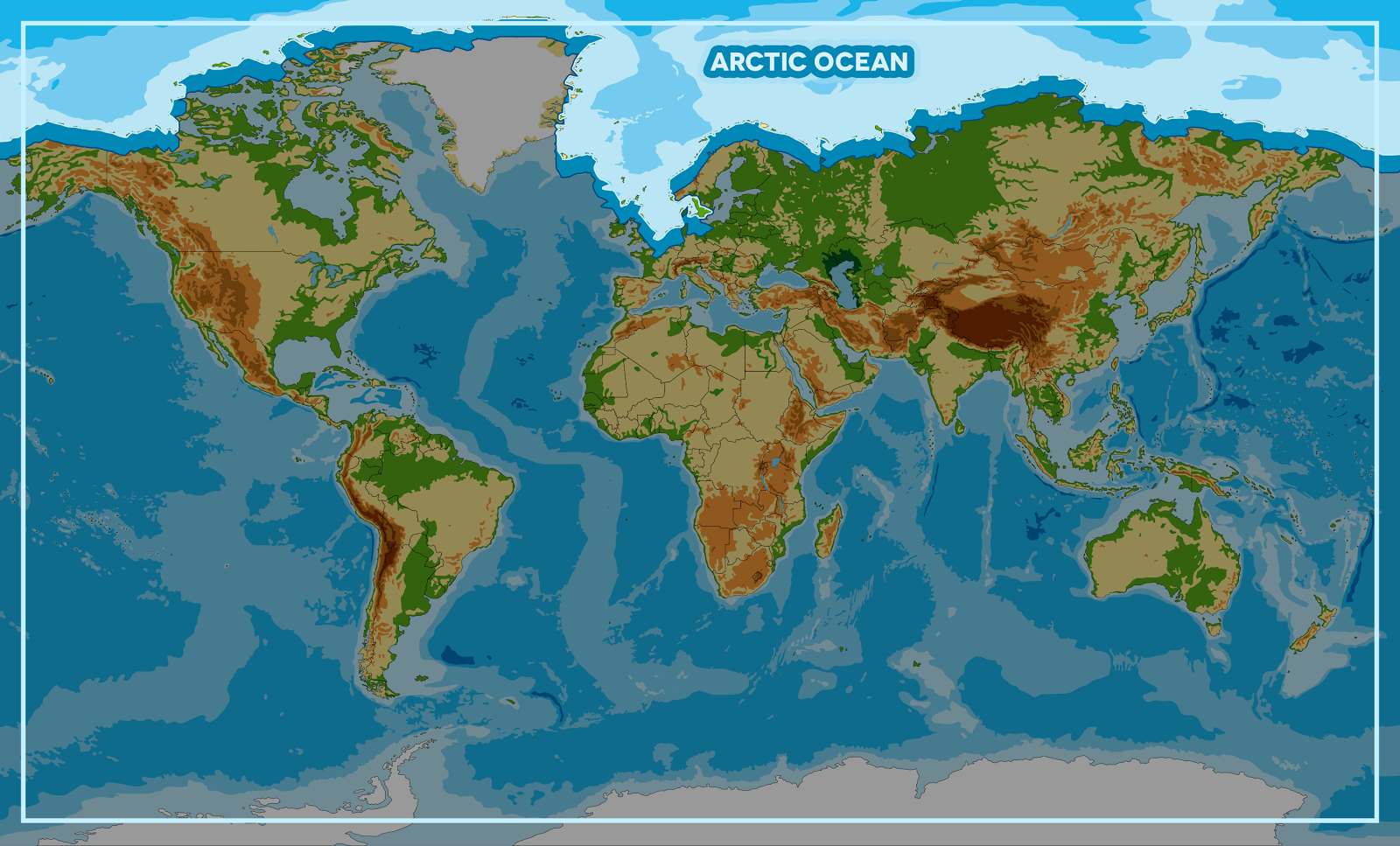
OCEAN
AWARENESS CAMPAIGN - As
part of the Cleaner Ocean Foundation's ocean
literacy campaign, we are developing a game that can be
played on mobile devices like the iphone or android smart
phones. In this game children learn a little about geography
as they select one of five ocean areas to rid of marine
litter. The screen above shows that the player has selected
the Arctic Ocean to tackle. Copyright Map © January 29 2018
all rights reserved COF
Ltd. Copyright Maps © January 29 2018
all rights reserved COF
Ltd.
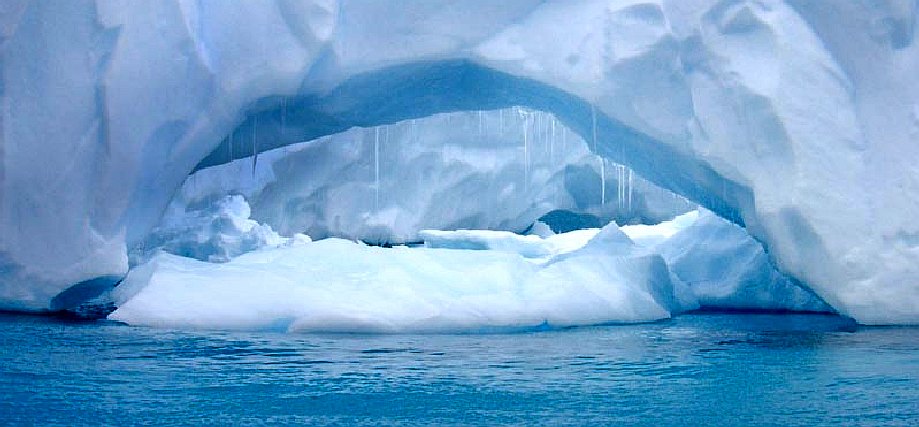
CIRCUMPOLAR CURRENT CONVERGENCE - The
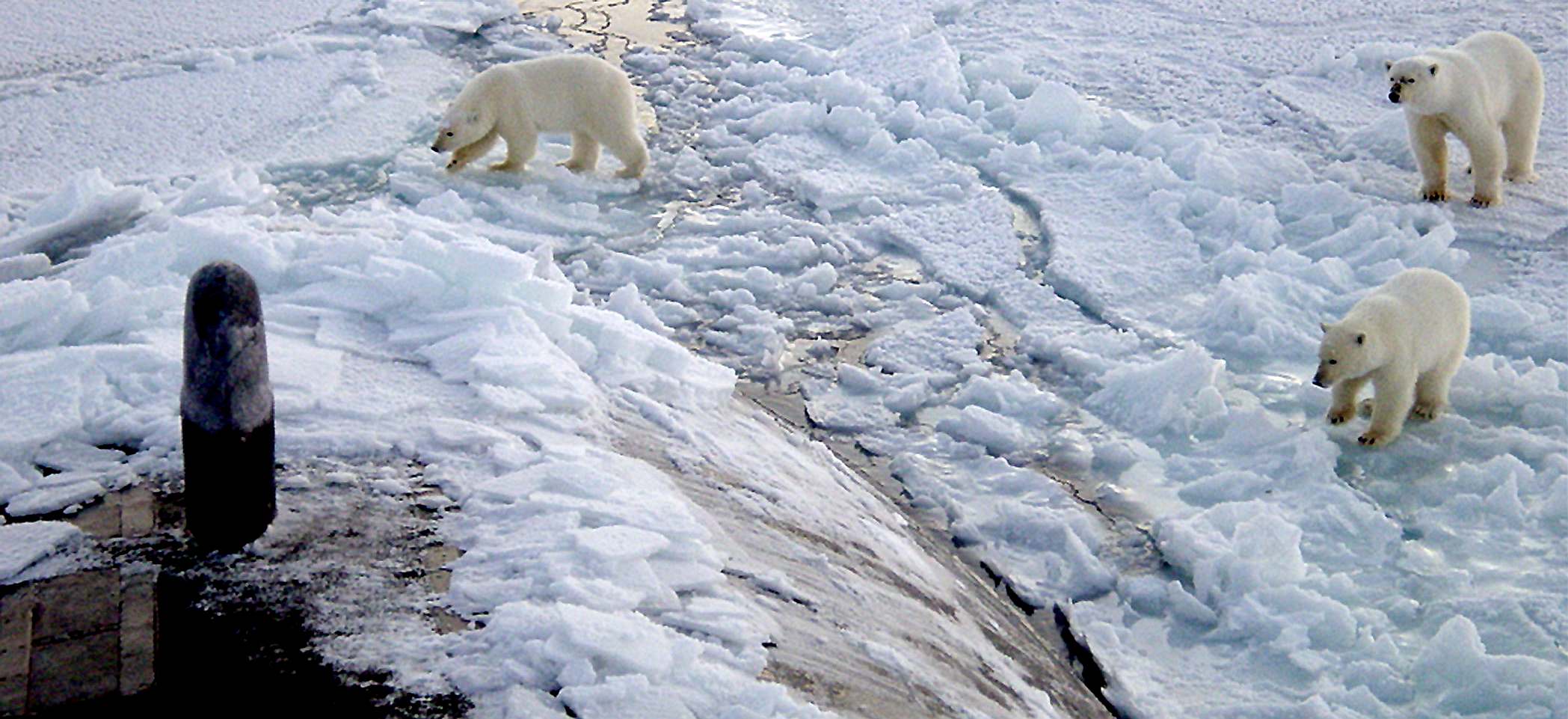
NORTH
POLE
- These
inqusitive polar bears inspect the surfaced submarine USS
Honolulu.
LINKS
& REFERENCE
https://en.wikipedia.org/wiki/Southern_Ocean
http://news.nationalgeographic.com/news/2015/01/150109-oceans-plastic-sea-trash-science-marine-debris/
http://www.independent.co.uk/environment/plastic-waste-in-ocean-to-increase-tenfold-by-2020-10042613.html
ACIDIFICATION
- ADRIATIC
- AMBRACIAN
GULF
- ARCTIC
- ATLANTIC
- BALTIC
- BAY
BENGAL - BAY
BISCAY - BERING
- BLACK
- CARIBBEAN
- CASPIAN
CORAL
- EAST
CHINA SEA
ENGLISH
CH - GOC
- GUANABARA
- GULF
GUINEA - GULF
MEXICO - INDIAN
-
IRC - MEDITERRANEAN
- NORTH
SEA - PACIFIC
- PERSIAN
GULF - SEA
JAPAN
STH
CHINA - PLASTIC
- PLANKTON
- PLASTIC
OCEANS - RED
- SEA
LEVEL RISE - UNCLOS
- UNEP
WOC
- WWF
BIOMAGNIFICATION
- BP DEEPWATER - CANCER
- DDT - FISHING NETS -
FUKUSHIMA - MICROBEADS
- MICRO
PLASTICS - OCEAN GYRES
- OCEAN WASTE -
PACKAGING - PCBS -
PET - PLASTIC
- POPS - SINGLE USE
GANGES
- NILE
This
website is provided on a free basis as a public information
service. copyright © Cleaner
Oceans Foundation Ltd (COFL) (Company No: 4674774)
January 2025. Solar
Studios, BN271RF, United Kingdom.
COFL
is a charity without share capital. The names Amphimax™
and SeaVax™
are trademarks.
|






